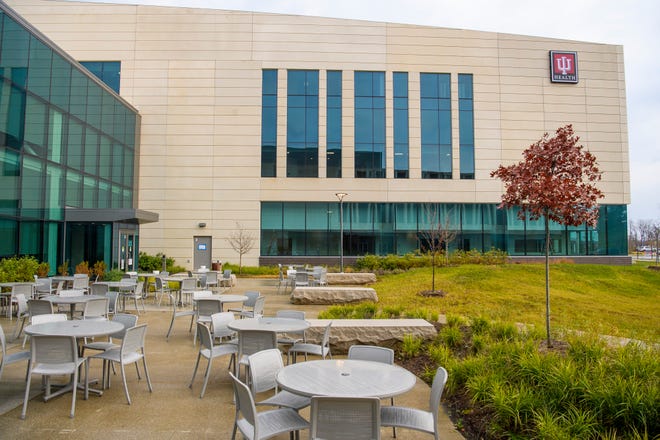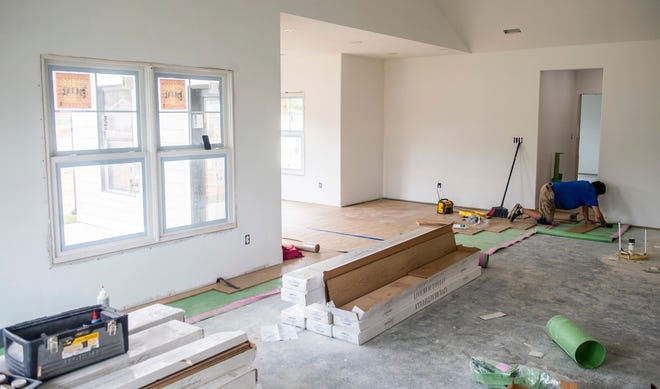Home values in Monroe County have risen 15% in the past year, but some homeowners are seeing sharply higher increases, which will mean bigger property tax bills next year.
County Assessor Judy Sharp said higher home sales prices and construction of the new hospital pushed the value of all property in Monroe County to nearly $14.6 billion.
That’s up nearly $1.9 billion, the highest one-year increase by far, though about $900 million of the increase came from the new hospital. Sharp said even without the hospital, the increase would have been a record.
The assessor’s office last week sent out the annual Notice of Assessment of Land and Improvements, also called Form 11, which tells people how much the value of their land and buildings has changed in the past year.
The increase in values of residential properties reflects low supply and high demand.
“It was the … crazy sales that we’ve seen,” she said.

While the total value of residential properties has risen 15%, the value changes for individual homes can fluctuate wildly from one part of the county to another or even from one neighborhood to another, depending on the sales in that area or whether owners have made improvements such as adding a basement or porch.
Sales contribute to the changes in assessment of other homes in their vicinity: For example, a home near the country club saw its assessed value rise nearly 21% in the past year, even though the owner had not made any significant improvements to it. Sharp said homes in the area simply sold for much more than their previous assessed value. When that happens, the value of all homes in the neighborhood rises — even if the owners don’t so much as replace a shingle.
The assessed value of that same home near the country club has more than doubled since 2018: Its value that year was about $56,000. This year its value is $119,000.
Homes in some areas appreciate much more slowly: For example, the home of Mayor John Hamilton was assessed at $359,000 in 2018, up just $19,400 or 5.4%, since 2012. During that same span, the value of the home of Monroe County Commissioner Penny Githens rose by $139,000, or 56%.
Significant value changes especially affect inexpensive homes because of the way Indiana calculates deductions: For example, the owner of a home assessed at $50,000 may get deductions of $37,000, or 74% of the home. That means the net tax liability, or the home value on which the property is taxed is only $13,000. However, if this home doubles in value, deductions reduce the taxable amount only by 64%, leaving a much higher net tax liability: $37,750.
That also translates into much higher tax bills. Whereas the owner of a home assessed at $50,000 might pay an annual property tax of $269, the owner of a home assessed at $100,000 would pay $741 annually. In other words, while the home value has increased by a factor of two, the tax on it has increased by a factor of 2.75.
Sharp said she understands property tax increases of hundreds of dollars can create some challenges for people, especially older people on fixed incomes, but she said she and her employees are appraisers following state law.
“The market is doing it,” she said. “I have to do what the market does, by law.”
While the Monroe County Treasurer’s Office recently sent out tax bills, the assessments mailed last week deal with tax bills for next year.
Kathy Bridwell, a 71-year-old retiree, said she and her husband, John, have lived in their home on the city’s north side since 1978, and have never seen their property tax jump as much as this year. Their annual tax bill, about $2,400, rose by $400. It has gone up more than $730 since 2019.
Bridwell, a South Bend native who worked as a daycare provider, said she and her husband can absorb the higher taxes because they get income from Social Security and a pension that her husband earned from his work on an oil tanker. In addition, she said, the couple live frugally and remain cautious about COVID-19, therefore not going out much.
Nonetheless, she said, she worries those sharp increases are going to continue for several years.
“That’s going to be a problem,” she said.

Heather Groves, a local Realtor with Sterling Real Estate and president of the Bloomington MLS, said the lack of housing in Monroe County, especially affordable housing, has pushed up sales prices, with buyers often paying above asking.
She said recently, she has seen those dynamics play out especially in the area southeast of the Indiana University campus. Some homes on South Dunn last year had already seen assessed value increases nearing 20%.
Groves said Bloomington continues to see housing demand from people who want to move here for retirement and people who decide to stay after completing their studies at IU. In addition, large employers such as drug maker Catalent continue to add jobs, which also brings more people to the city and county.
People who are looking for inexpensive homes are going to have a tough time, she said, as the market has very little availability for less than $200,000, and the homes available at that price are not in good shape.
Kristen Weida, executive vice president of the Bloomington Board of Realtors, said some prospective buyers also are getting outbid by cash offers.
That means people who are qualified for a $275,000 loan really have to look for a property where the asking price is $250,000 or lower, because the sales price likely will exceed the asking price.
Weida also said if interest rates continue to rise, demand should be somewhat reduced. A few months ago, first-time homebuyers often saw mortgages below their former rent payments. That difference has largely disappeared. If rates rise more, Weida said some renters will choose to continue to rent rather than buy.
However, the Indiana Association of Realtors said in a news release recently supplies across the state remain very low, and correcting the gaps between supply and demand “will take years.”
Residential real estate, at nearly $9.5 billion, accounts for about two-thirds of the value of all property in the county. Commercial property, at about $3.8 billion, is the second-biggest category, at 26%. Nearly $1.6 billion worth of property is owned by the government or exempt, meaning not taxed.
You can find a tax bill estimator here: tinyurl.com/yewyndzx.
Published by The Herald Times
[related_posts_by_tax posts_per_page="4" format="thumbnails" image_size="full" limit_year="1"]

